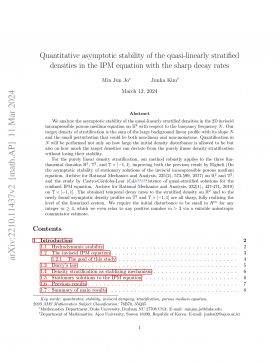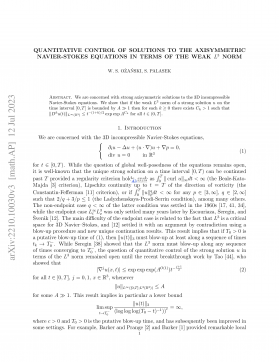Fawcett, Andrew - Vampires
VIP免费
2024-12-19
1
0
203.24KB
15 页
5.9玖币
侵权投诉
VAMPIRES
Written by Andrew Fawcett for www.criticalhit.co.uk
A Vampir I am, cursed by the gods and devoid of life. My soul have long departed, now unnatural
blood course through my veins. Where my soul lies, I cared once, but the dreams I have in my granite
resting place, each day for six centuries, are of sweet memories; my homeland, a village in Austelande
that have since felt the fire of cruel Men, and I hear the music of widows who weep for their fallen
husbands; my Father, a red-cheeked pageboy I was when Count von Karsteine have come for me,
though undeath hath now aged me, and the experience of that moment I relive after every drop of blood
warm my cold lips; the Plains of Death, from whither the spirit have come and I thirst for the vitae of
mortals because of it; and last, the sweet memories of those I have taken. I grow weary at last in my
immortal undeath. The Gospodars have prepare my carriage and the boxes of my beloved Austelande
have been taken to Altdorf. When the cock crows on Kaldezeit and the first day of winter, I at last leave
Praag for a better un-life.
From the journal of 'The Vampire of Praag'
VAMPIRE ORIGINS
The following comes from a scrap of parchment found by the Nuln Watch at Herr Oskar Faustmann's
residence. The insane Alchemist turned Necromancer was tried for witchcraft and subsequently
executed and burned by the Church of Sigmar.
According to my research, it happened long ago in the ancient civilisation of Nehekhara and involved
the machinations of the Liche-priests of the cult of the dead. The Priest Kings of this civilisation
believed that by building huge tombs these would be their houses for all eternity - but I shan't dwell on
that for this is another treatise all together. It was the Liche-priests who embalmed the corpses and, like
their Priest King masters, had an obsession with immortality. One such Liche-priest was Nagash. By all
accounts he learned much from his meeting with a group of Elves, said to come from the mythical land
of Naggaroth (I believe he had them entombed alive when he learnt all he could from them), and their
religion. Using this knowledge he would invent the field of necromancy in order to find the secret of
immortality.
Nagash's Elixir
And so Nagash laboured to find the Elixir of Life: the magical potion that would give the imbiber
immortality. The principal component for these elixirs was human blood; the blood of men, the blood
of women, young and old, all were mixed into their own concoctions. Success came when warpstone
was added along with the powdered remains of the murdered Priest King of Khemri, who was Nagash's
brother (he sat on the throne of Khemri until Nagash overthrew him in a coup to seize power for
himself); the Priest Kings were said to have divine blood running through their veins because of a
ritual they all went through before their coronation so that their people would worship them as gods. It
was this alchemical substance which prolonged Nagash's life and the lives of some of his closest aides.
What immortality it gave them I cannot be sure of for they were not Vampires. I am certain that
Nagash achieved something that the Lahmians did not and possibly could not. The Necromancer's
research was cut short when the other Priest Kings of Nehekhara joined against him and defeated him
in bloody war.
Neferata's Elixir
Some of the Lahmians, who were in alliance with the other Priest Kings who overthrew Nagash, found
the Necromancer's library and took his books on necromancy back to their city where they sort to
emulate the Liche's works. One of the Lahmians was Neferata, the Queen. Her elixir bore some kind of
curse, brought about probably due to the wrong incantations of Necromantic and Dark magic spells, as
well as a wide variety of ingredients mixed together during bizarre rituals. Those who drunk from it
became the first true Vampires. I can only think that an otherworldly spirit (from the hells of Morr's
accursed brother probably) enters the body of the imbiber bestowing a kind of dark immortality that
only fresh blood can supplement - a very different alchemy, which relied much upon evil religion and
unknown sorcery, compared to the Great Necromancer's Elixir, which appears to turn the imbiber into
a Liche-like creature.
Conclusions
I intend to learn more and shall endeavor to find out what went wrong in the alchemy of both
substances. Some of the ancient hieroglyphs are proving very difficult to decipher and my newly
acquired knowledge of the runes of Nehekhara only extends so far. I believe that alchemical substances
with the right amounts of warpstone could have a positive effect on the human body. I do not believe it
is necessary to dabble with Dark magic, for I wish to keep my sanity and humanity, but blood is a
necessity unfortunately. There are plenty of dregs littering the streets of Nuln who can easily be
persuaded to volunteer themselves for my experiments for the want of a crown.
VAMPIRE BELIEF IN THE OLD WORLD
Signs and Possible causes of Vampirism
There are many ways in which Old Worlders have devised to spot a vampire if it was believed that
such a creature was roaming the region. One way was to place a naked virgin (preferrably female) on a
horse and parade them through a graveyard. If the horse decided not to walk over a burial site, this was
then believed to be the resting place of a vampire and the body inside was exhumed and subsequently
mutilated.
In fact the cause of vampirism is in many ways connected with religion, especially where
excommunication is concerned; a person who is excommunicated is treated with deep suspicion and
distrust as there is a belief that anyone who has upset religious faith, and subsequently punished by the
priesthood, must be evil and may turn into vampires. Also it is common practice for some temples at
certain times of the year, often in southern regions of the Old World, to distribute garlic to its
parishioners, because garlic is seen as a powerful herb to counteract the smell of death and anyone who
does not eat it is treated with suspicion; that he might be in league with evil forces or might even be a
vampire.
In more eastern areas of the Old World, particularly in Ostland, Ostermark and Sylvania, or any rural
places, graves are often opened three years after the death of a child, five years after the death of a
young person, or seven years after the death of an adult to check for vampirism. Sylvanians even
believe that having one foot in the corner of a coffin is evidence in itself of vampirism; after which the
body is destroyed in this case, dismembered and then burned as a priest delivers the appropriate
religious rites.
The more obvious signs of vampirism, which could catch the eye of superstitious folk, is through the
use of magic, no matter how minor. If not a Vampire, the person using magic is often seen as marked
by evil or Chaos and could be in league with dark sorcerers or vampires. In more fanciful imaginations
it is claimed that people who are vampires cast no reflection in a mirror or on the surface of water or
have no shadow.
A baby born with a caul (the amniotic membrane which covers the head that some babies are born
with), or even born with teeth, may be seen as an agent of evil by some communities and will be
prevented from eating it lest the baby become polluted and turn into a vampire. The Strigany gypsies of
the southern Empire believe that if not appropriately dealt with, the infant will become Strigoi upon its
death. Also a baby born on certain religious days of the year maybe seen as cursed by some
communities. They believe that the birth of a baby on a religious day, such as 18th Sigmarzeit, diverts
attention away from the deity they are supposed to be respecting.
People who commit suicide are sometimes seen as cursed and their bodies are typically exhumed after
a matter of months to a few years to check that the corpses still lie in their coffins or that they are
definitely dead. Falling under the same cloud of suspicion are the corpses of people who have died
suddenly or unexpectedly.
The Prevention of Vampirism
Just as there are measures to identify a vampire that are many measures for the prevention of
vampirism. A common prevention is to stop animals from passing over a corpse, as some people
believed that if a black cat or dog jumps over a corpse, the deceased would turn into a vampire. Other
preventions include placing a thorny rose, or a religious symbol, in a grave; placing garlic on windows
and rubbing it on cattle; placing a large rock over the grave to prevent the corpse's return from death;
burying corpses face-down so that should they turn into vampires they would have to dig deeper into
the ground because they would be facing the wrong direction; decapitating the body; wrapping the
corpse in heavy cloth, believing that it would be much more difficult for it to rise from the dead, and,
similarly, binding a corpse's hands and legs with rope or chains or nailing its clothes to the coffin. It is
also believed that Vampires have a fascination for counting and that by placing millet or poppy seeds in
a grave the Vampire will rise at night, count all the seeds until sunrise and by that time it will be too
late.
The above methods have come about through the lack of knowledge about the human body and its
transformation after death. The dead body goes through natural states of decomposition and people
believe this to be evidence of corpses transforming into vampires. For example, hair and nails continue
to grow, indicating continued life; the corpse becomes bloated, as a result of naturally occurring gasses
in the body, meaning that it feeds on the living; blood sometimes appearing near the mouth, as a result
of bodily decay, indicating the drinking of blood; the typically grotesque appearance of a corpse
complete with pale skin, indicating vampirism and the need for blood.
VAMPIRES FROM BEYOND THE EMPIRE
Many cultures of the Known World have legends in some way connected to the vampire myth and
many of them have come from faraway lands of the south and east, Araby and Ind respectively. For the
Empire the myth took route in Sylvania where Vampires were commonly referred to as Vampir or
Vampyre, and today these words have usurped the more Imperial-sounding blutsaeuger (Bloodsucker).
In Bretonnia the Vampire is known as Nosferatu, which is believed to derive from an eastern Sylvanian
term for 'unclean one' called necuratul; in Estalia they are known as Wamphyrio; in Tilea they are
known as Stregoni; in Kislev, which shares much in common with Sylvanian Vampire myth, at least on
its southern fringes, they are known as Upyr and Upior; lastly, in Albany, and other remote parts of the
Albion Isles, there is rumoured to be a vampiric race known as the Buhvan-Sith, in the guise of
beautiful women they entrance male travellers and dance with them until they drop and then feed on
their blood.
Further away from the Old World the Vampire myth is even more intriguing. In Cathay there have
been tales told of the Kiang Shi who are Vampires with red eyes and green or pink hair; in Nippon
there is the Kyuketsuki, which can take the form of a cat; and in the Southlands there is the Obayifo.
The myth of the Obayifo has been brought back from Old World sailors, loving as they do the quaint
stories of the feral Southlander tribesfolk, and it was a Vampiric creature who could become like fire
and haunt the night searching for blood, only when it had fed enough does it resume human form.
Apparently the Obayifo had to collect enough blood to please a demon. Another Southlander Vampire,
of which there are many, is the Popobawa. Apparently it looked human but could take the form of a
one-eye, bat-winged baboon.
But the most interesting Vampires come out of the folklore of Araby and Ind. Incredibly ancient
hieroglyphics of Nehekharan origin depict creatures with the upper body of a woman and the lower
body of a winged serpent and I have managed to translate the word Vorkudlak as something close to
Vampire; they could possibly be the mythical Vampire women of the Lahmian sisterhood. In Araby,
west of the ruin that was Nehekhara, a Vampire is known as an Algul but there are also the Ekimmu.
The Ekimmu was supposed to be a Vampire which rose from the dead when hungry and would feed on
human blood if sacrifices weren't left near its grave.
In Ind there are many Vampire legends and they are far from the romantic ideal as depicted by some of
the Old Worlder playwrights. First, there is the Rakshasas, found in ancient paintings on the walls of
caves, holding a blood-filled goblet in the form of a human skull standing in a pool of blood. The
Rakshasas has long been portrayed as a Vampire, although this myth is more prevalent in northern Ind.
摘要:
展开>>
收起<<
VAMPIRESWrittenbyAndrewFawcettforwww.criticalhit.co.ukAVampirIam,cursedbythegodsanddevoidoflife.Mysoulhavelongdeparted,nowunnaturalbloodcoursethroughmyveins.Wheremysoullies,Icaredonce,butthedreamsIhaveinmygraniterestingplace,eachdayforsixcenturies,areofsweetmemories;myhomeland,avillageinAustelandeth...
声明:本站为文档C2C交易模式,即用户上传的文档直接被用户下载,本站只是中间服务平台,本站所有文档下载所得的收益归上传人(含作者)所有。玖贝云文库仅提供信息存储空间,仅对用户上传内容的表现方式做保护处理,对上载内容本身不做任何修改或编辑。若文档所含内容侵犯了您的版权或隐私,请立即通知玖贝云文库,我们立即给予删除!
分类:外语学习
价格:5.9玖币
属性:15 页
大小:203.24KB
格式:PDF
时间:2024-12-19



















 渝公网安备50010702506394
渝公网安备50010702506394
